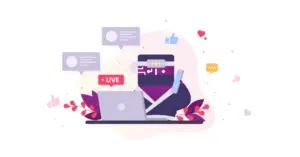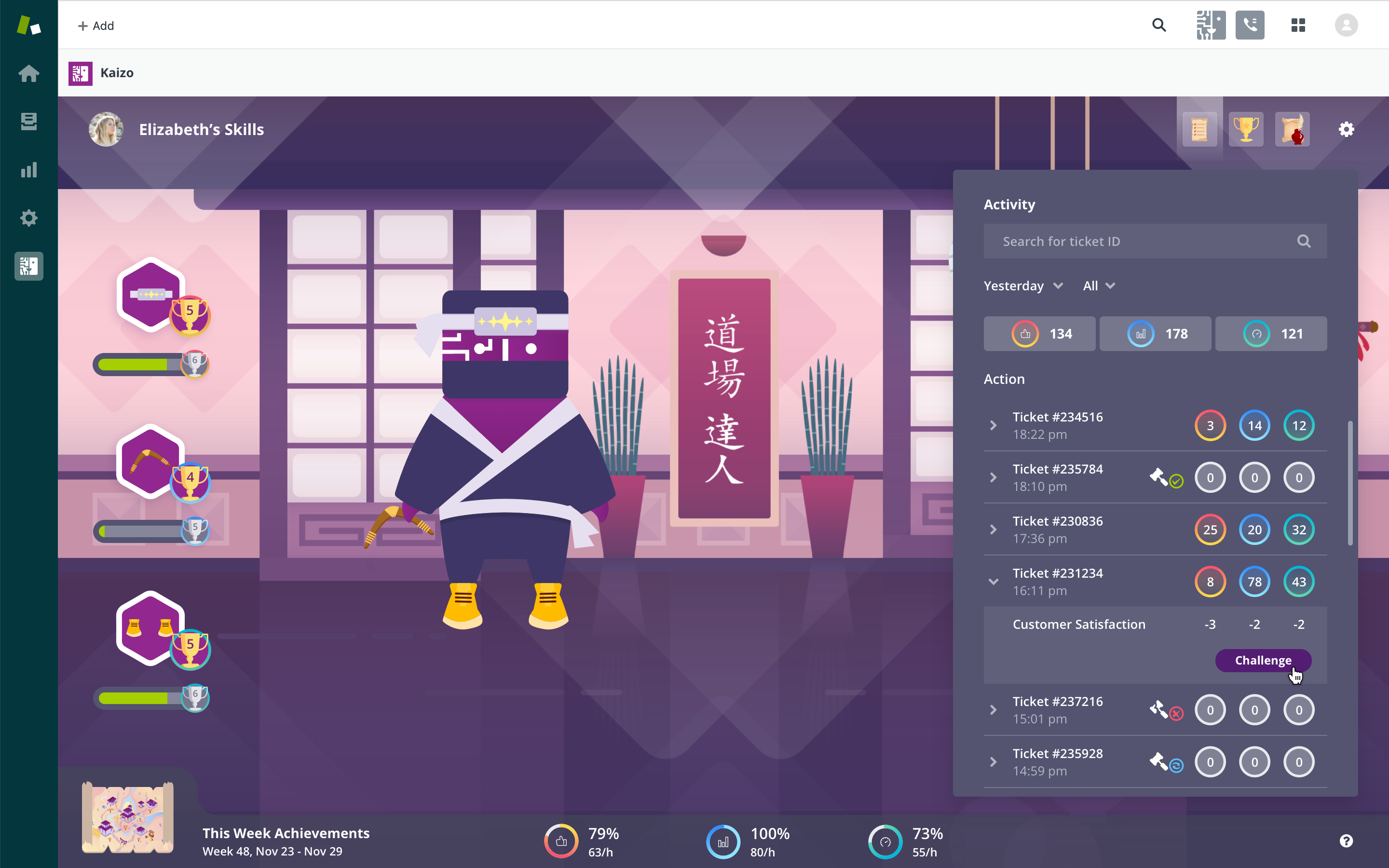If you asked 10 customer support managers to write down which KPI is most important for their team, at least 9 would mention customer satisfaction (CSAT). If you don’t believe me, just Google ‘most important customer support KPI’s’ click any listicle, and… voila!
It’s unanimous, and rightfully so.
However, whilst window into how customers perceive your service.
Negative Response Rate (NRR). The quantified accumulation of your customer’s negative responses, that if measured and utilized correctly, is the key to improving all aspects of your support. From employee engagement.
We chatted with customer support leaders from Zendesk, Marleyspoon, and Fetchpackage to explore why NRR is the most important customer support KPI and how you can utilize it to drastically improve your team from the bottom up.
.
What is NRR?
Negative Response Rate (NRR), also known as DSAT or BADSAT, is a customer support metric measuring the number of negative customer responses an agent/team receives vs positive responses as a percentage.
It is the inverse of an agent’s CSAT score (e.g. If an agent’s weekly CSAT score is 60%, their NRR will be 40%).
*For Zendesk users negative customer responses are referred to as bad ratings*
.
How to calculate NRR
Due to its major importance as a key indicator of customer dissatisfaction and a tool for improvement, many managers/QA leads undergo the time-consuming process of calculating the rate manually.
This involves sifting through each bad and good rating left for each agent. Then organizing these numbers into a spreadsheet and manually calculating the rate based on the formula:
.
NRR= negative customer responses ÷ all customer responses
.
To save support teams hours on these tedious processes, Kaizo calculates the metric automatically for each agent in real-time and displays it alongside their CSAT score in their personal Scorecard.
.
.
The Scorecard allows you to drill-in to these metrics to see and evaluate exactly which negative responses contributed to your NRR.
Whether it’s for 1:1 performance meetings, your quarterly business review, or a product feedback session, all team members are up to speed with easy access to real-time metrics and negative response transcripts all in one place. Making it easier than ever to utilize these responses to improve wherever you may have dissatisfied the customer.
.
Why NRR is one of the most important KPIs in customer support
Some of the best lessons we learn are from our mistakes and failures.
Whilst negative responses may seem like a loss for your team, they are actually the key to developing all aspects of your customer support. Beyond that, they are the key to optimizing how your company operates as a whole.
Whilst positive CSAT responses are valuable for validating your support or product/service, what they don’t do is provide constructive criticism from which your team can grow.
On the contrary, negative responses provide a window into the unbiased, honest perceptions that customers have of your support and the product/service your company provides.
These direct insights allow your team to:
- Improve internal processes, product/service, and agent performance
- Ensure long-lasting customer retention
- Revamp employee motivation and engagement in the workplace
.
How to utilize negative responses for improvement
Naturally, when it comes to negative responses the goal is to have as few as possible to ensure that your customers are ultimately satisfied.
However, realistically, no matter how perfect your product/service and support are, there will always be select customers who are unhappy with the way you operate.
It’s what you do with these negative responses that really matters.
Something to keep in mind when utilizing your negative responses is that they can be used to identify both smaller problems and larger-scale issues. This is what Holly X, Head of Support at Zendesk refers to as real-time and root cause reviews.
- Real-time review: A manager/team lead reviewing an agent’s negative rating within 24 hours to assess whether it was actionable or non-actionable.
- Actionable rating: When the customer’s dissatisfaction is outside of an agent’s control. E.g: product malfunction or untimely delivery.
- Non- actionable rating: When the customer’s dissatisfaction is the direct fault of the agent. E.g: lack of product knowledge, not resolving an issue.
- Root cause review: Weekly/quarterly collecting all the previous negative responses to identify the trends in what is causing the negative ratings. This means looking at reasons (e.g product knowledge) and channels (e.g – chat has the highest satisfaction rate) to pinpoint areas that need coaching.
“It’s important to not only look at BADSAT in a vacuum. But to take a step back and see the ebbs and flows of it alongside other business metrics to identify performance trends”
Holly X, Head of Support at Zendesk
Here are a few ways your team can utilize your negative responses for overall improvement.
.
Improving processes, product feedback, and agent performance
For any business, the key to continually developing and improving is quality customer feedback.
Analyzing and acting upon negative responses allow customer support teams to reflect on how they can develop the customer experience they are providing from the inside out.
.
Internal Processes
Even if your support team has a strong management structure and operationally efficient tools, there can often be small gaps in your internal processes that contribute negatively to your customer experience.
The key to getting feedback on your processes is simple, ask for it. Be proactive and don’t be afraid to receive negative responses because they will shape your process development.
.
“First of all, we proactively ask our customers to leave feedback then categorize our negative responses in issue codes [tags]. We then report these to the relevant departments and work together to identify root causes and bottlenecks in our process and work on improving them immediately”
Charles Damore, Customer Communications Supervisor at Marleyspoon
.
💡 Tips
- Be proactive. 71% of consumers say that they would leave a review/response for a business when asked. So ask customers specific questions about their satisfaction with parts of your process you think may need improvement.
- Hold monthly and quarterly business reviews with your operations team to go over negative reviews and construct actionable steps to developing your process. Continue this process to analyze whether the changes you make result in a decrease in negative responses.
Product Feedback
Oftentimes, negative responses aren’t focused on the level of support your team is providing. Rather they give critical feedback on the product/service your company supplies.
These responses can be used to create an actionable product feedback loop between your support and product teams.
.
“Some of our most common [negative] responses are from customers who are unhappy with a certain ingredient in one of our meals. Once we detect a trend in these responses, we address it with the product team in the monthly business review and adjust it accordingly”
Charles Damore, Customer Communications Supervisor at Marleyspoon
💡 Tips
- Use ticket tags to categorize negative responses. Using the tag #product_feedback to organize all relevant tickets that should be shared with the product team.
- Create a Slack channel called #product_responses. Any time an agent receives negative responses about the product they can post them here and managers can assess what needs to be pushed into the feedback loop.
- Hold weekly meetings to discuss these negative responses with your support team. Analyze the results to see if there are any trends. Then share these with the product team. E.g. receiving 100 tickets last week about changing a certain feature.
.
Agent Performance/Service Quality
Whether it’s providing incorrect information, not apologizing for a late response, or using an unwelcoming tone of voice, an agent’s service quality is one of the prime catalysts for negative responses.
Whilst these instances reflect poorly on your company, they are also opportunities to analyze and act upon areas that your agents need to improve on.
.
“If I get a negative reply about an agent, I use this as a retraining opportunity and put aside time for 1:1 meetings. This ensures each agent is educated and has the resources to provide the level of service the customer expects”
Sophia Spagnuolo, QA lead at Fetchpackage
.
💡 Tips
- Set NRR as one of your team’s main KPI’s with incentives for those who achieve the lowest scores each month. This will spark a dramatic increase in service quality as agents are more motivated to achieve their team goals.
- Each week, categorize aspects of your agents’ performance that are causing negative reviews (e.g- tone of voice). Add this as part of your QA criteria. Rather than entering this data manually and analyzing it, ditch your spreadsheets and let Kaizo’s customizable QA system crunch the numbers for you.
- Cross-reference negative trends in an agent’s negative customer ratings with their QA to pinpoint coaching areas. E.g: Agent A has received 4 negative ratings for lack of product knowledge and has seen a drop in their score for the same reason. This identifies an exact area that needs improvement.
- Incentivize your agents to improve in these focus areas with weekly rewards for those that provide high-quality answers based on your team’s quality criteria.
Customer Retention
For customer support teams, handling negative responses is make or break time in ensuring you retain a customer or lose them for life.
In a highly competitive market, focusing on the quality of your responses to negative feedback rather than speed and quantity is the key to ensuring your customers don’t churn.
“As a startup, the way in which we handle negative responses can be the difference between a customer advocating us or offboarding our service. We try to focus on doing things right the first time even in times of pressure “
Sophia Spagnuolo, QA lead at Fetchpackage
.
💡Tips
- Establish a set of quality criteria and examples for your team on how to respond to varying negative responses. Review these monthly, based on incoming responses, and take time once per month to educate your agents on the level of service you expect from them when answering negative responses.
- In busy periods it is often tempting to answer negative responses quickly, leaving quality at the wayside. To combat this, incentivize quality and one-touch resolutions. Kaizo’s makes this easy by allowing managers to customize criteria to dictate what actions agents are rewarded with in-game skill points. Managers can set an increased amount of points for one-touch solutions and set negative points for any ticket reopens. Read more about how Kaizo uses gamification to increase service quality here.
.
Revamp employee motivation, engagement, and development
Perhaps the only downfall of NRR as a KPI is the fact that the customer completely dictates it. This leaves a lot of room for subjectivity and invalidity.
See it through an agent’s eyes. Oftentimes, a ticket that you are handling contains a negative response due to something that is completely out of your control. Perhaps a product malfunction or untimely delivery.
Yet this response still counts against your personal NRR and could be the difference between you hitting your quarterly goals or not..
That doesn’t seem fair, does it?
The power of a fair evaluation
If agents are penalized for matters out of their control it not only hinders their improvement but deeply demotivates them.
After speaking with a number of agents and team leads it became clear that to provide a fair evaluation of their service quality they had to have the ability to ‘challenge’ negative responses.
So we built a feature to allow just that.
Kaizo’s NRR correction feature allows agents to fairly challenge negative responses that they believe to be out of their control.
Once challenged, the response is evaluated by the agent’s team lead or QA lead and if agreed upon, can be overturned and taken off their overall NRR.
This gives agents a true NRR– filled only with responses where they truly could have performed better. It allows them to feel fairly evaluated, improve from these valid sets of feedback, and motivates them to develop their service skills.
.
“I used to get a lot of complaints from agents about how they felt unfairly evaluated by non-performance related negative responses. Now that the ball is in their court they’re noticeably more motivated to improve their responses and achieve their weekly goals”
Sophia Spagnuolo, QA lead at Fetchpackage
If measured and used correctly NRR can be the secret ingredient to the continual development of your customer support team. From the engagement and performance of your agents to the advocacy of your customer base, who knew that getting negative feedback could be so great!
.









